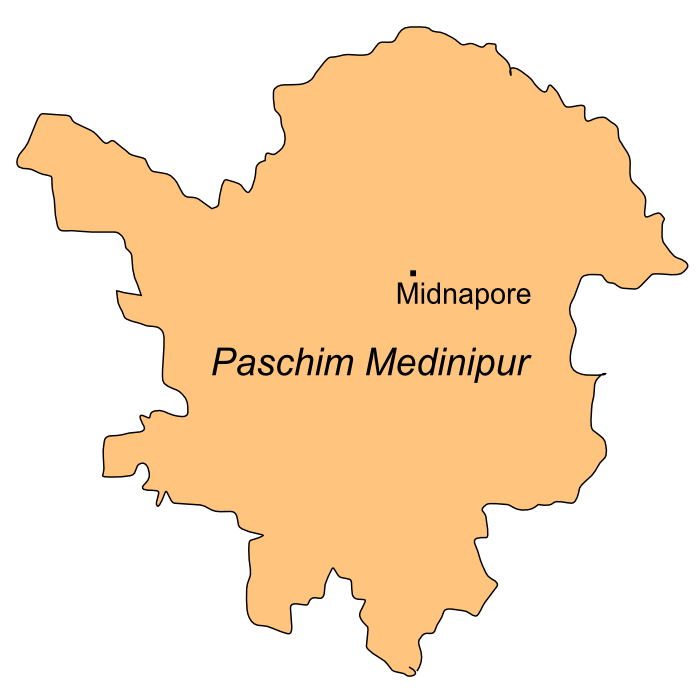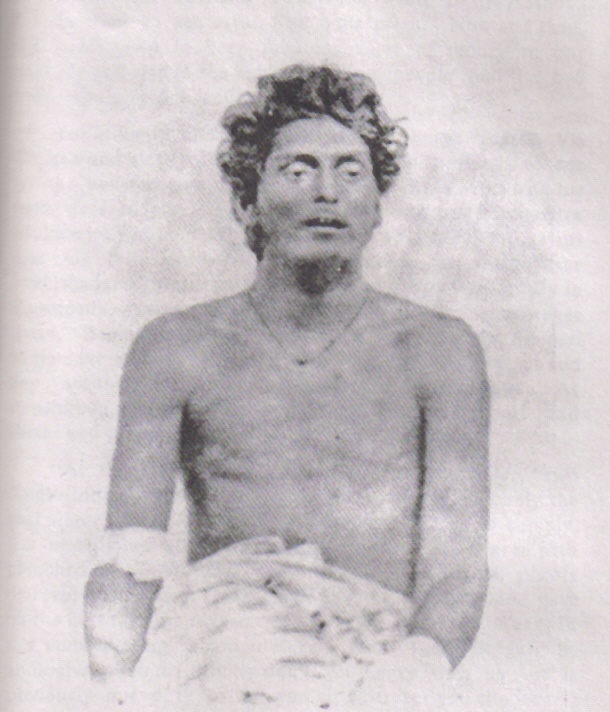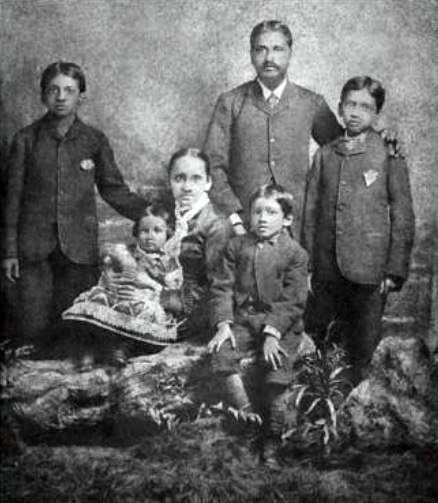|
Khudiram Bose
Khudiram Bose (also spelled ''Khudiram Basu'') (3 December 1889 – 11 August 1908) was an Indian revolutionary from Bengal Presidency who opposed British rule of India. For his role in the Muzaffarpur Conspiracy Case, along with Prafulla Chaki, he was sentenced to death and subsequently executed, making him one of the youngest martyrs of the Indian Independence Movement. Khudiram, along with Prafulla Chaki, attempted to assassinate a British judge, Magistrate Douglas Kingsford, by throwing bombs on the carriage they suspected the man was in. Magistrate Kingsford, however, was seated in a different carriage, and the throwing of bombs resulted in the deaths of two British women. Prafulla fatally shot himself before the arrest. Khudiram was arrested and trialed for the murder of the two women, ultimately being sentenced to death. He was one of the first Indian revolutionaries in Bengal to be executed by the British. At the time of his hanging, Khudiram was 18 years, 8 month ... [...More Info...] [...Related Items...] OR: [Wikipedia] [Google] [Baidu] |
Midnapore
Medinipur or Midnapore (Pron: med̪iːniːpur) is a city known for its history in the Indian state of West Bengal. It is the headquarters of the West Medinipur district. It is situated on the banks of the Kangsabati River (variously known as ''Kasai'' and ''Cossye''). The Urban Agglomeration of Midnapore consists of the city proper, Mohanpur, Keranichoti and Khayerullachak. Etymology The English name Midnapore is a corruption of the original name of the town which was Madanipur. It was named after Haji Mustafa Madani, a 17th-century Bengali Muslim scholar who was gifted tax-free land in the present area in addition to an estate there which included a mosque. Madani is the ancestor of Mohammad Abu Bakr Siddique of Furfura Sharif. According to Sri Hari Sadhan Das, the city got its name from Medinikar, the founder of the city in 1238, who was the son of Prankara, the feudal king of Gondichadesh (now Odisha). He was also the writer of "Medinikosh". Hara Prasad Shastri thinks that t ... [...More Info...] [...Related Items...] OR: [Wikipedia] [Google] [Baidu] |
Medinipur District
Midnapore district was a district of the state of West Bengal, India. This district was bifurcated on 1 January 2002 into the Purba Medinipur district and the Paschim Medinipur district. On 4 April 2017, the Jhargram subdivision of Paschim Medinipur district (which formed part of the undivided Midnapore district) was converted into Jhargram district. Demographics See also * Midnapore town *Partition of Midnapore Partition may refer to: Computing Hardware * Disk partitioning, the division of a hard disk drive * Memory partition, a subdivision of a computer's memory, usually for use by a single job Software * Partition (database), the division of a ... References Former districts of West Bengal {{WestBengal-geo-stub ... [...More Info...] [...Related Items...] OR: [Wikipedia] [Google] [Baidu] |
Indian Imperial Police
The Indian Imperial Police, referred to variously as the Imperial Police or simply the Indian Police or, by 1905, Imperial Police, was part of the Indian Police Services, the uniform system of police administration in British Raj, as established by Government of India Act 1858, Police Act of 1861. It was motivated by the danger experienced by the British during the 1857 rebellion. During 1920 the Imperial Indian police had 310,000 police in their contingent. Its members policed more than 300 million people in India, Pakistan, Bangladesh and Burma (then comprising the British Raj). In 1948, a year after India's independence, the Imperial Police Service was replaced by the Indian Police Service, which had been constituted as part of the All-India Services by the Constitution.Maheshwari, S. R. (2001''Indian Administration'' (Sixth Edition), p. 306. Orient Blackswan.At Google Books. Retrieved 13 August 2013. History It comprised two branches, the Superior Police Services, from which t ... [...More Info...] [...Related Items...] OR: [Wikipedia] [Google] [Baidu] |
Khudiram Bose Pusa Railway Station
Khudiram Bose Pusa station is a two platform station located in Samastipur district, Bihar, India with zero originating trains. It is away from Patna Airport Jayprakash Narayan International Airport is an international airport serving Patna, the capital of Bihar, India. It is named after the independence activist and political leader, Jayprakash Narayan. It is the 14th busiest airport in India. T ... and from Samastipur Junction. Elevation is above sea level and the station is in East Central zone (ECR) and comes under Sonpur division. History The station name was Waini railway station. Later it was named Pusa road Waini after establishing Dr Rajendra Prasad Agriculture University in Pusa. After few years Waini removed and knowen as Pusa Road for a long. After 1990s this station named Khudiram Bose Pusa to honour the youngest Bengali revolutionary Khudiram Bose, who was caught here by two armed constables. He reached the station after covering distance walking ba ... [...More Info...] [...Related Items...] OR: [Wikipedia] [Google] [Baidu] |
Pringle Kennedy
Pringle Kennedy (1855 – 16 February 1925) was a British author and barrister. He wrote 2 books (during 1905–1925) for which he is best known: * ''A History of the Great Moghuls (Or A History of the Badshahate of Delhi From 1398 AD To 1739)'', in 2 volumes, during 1905–1911. "Ke - New General Catalog of Old Books & Authors", 2008, webpage: AuthBook-Ke ''A History of the Great Moghuls'' (about India), reprinted in 1987, 556 pages, Google Books link: Books-google-PKennedy * ''Arabian Society at the Time of Muhammad'', published in 1926 by Thacker, Spink & Co. (Calcutta, India). "Arabian society at the time of Muhammad (Open Library)", 2008, webpage: OpenLibrary-652M Pringle Kennedy has observed (''Arabian Society at the Time of Muhammad'', pp. 8–10, 18-21): "Muhammad was, to use a striking expression, the man of the hour." "The Holy Prophet Muhammad in the Eyes of Non-Muslims", 2008, webpage: In 1908, the young Bengali revolutionary, Khudiram Bose ... [...More Info...] [...Related Items...] OR: [Wikipedia] [Google] [Baidu] |
Herbert Broom
Herbert Broom (1815–1882) was an English writer on law. Life Broom was born at Kidderminster in 1815, and was educated at Trinity College, Cambridge, where he graduated as a wrangler in 1837. He proceeded LL.D. in 1864. He was called to the bar at the Inner Temple in Michaelmas term 1840, and practised on the home circuit. For a considerable period he occupied the post of reader of common law at the Inner Temple. He died at the Priory, Orpington Orpington is a town and area in south east London, England, within the London Borough of Bromley. It is 13.4 miles (21.6 km) south east of Charing Cross. On the south-eastern edge of the Greater London Built-up Area, it is south of St ..., Kent, on 2 May 1882. ''Legal Maxims'' (1845) gained wide circulation as an established text-book for students. Works ;Law books * ''Practical Rules for determining Parties to Actions'', 1843. * ''Legal Maxims'', 1845. third edition, 1858 Fifth edition, 1870. * ''Practice of Superior ... [...More Info...] [...Related Items...] OR: [Wikipedia] [Google] [Baidu] |
Picric Acid
Picric acid is an organic compound with the formula (O2N)3C6H2OH. Its IUPAC name is 2,4,6-trinitrophenol (TNP). The name "picric" comes from el, πικρός (''pikros''), meaning "bitter", due to its bitter taste. It is one of the most acidic phenols. Like other strongly nitrated organic compounds, picric acid is an explosive, which is its primary use. It has also been used as medicine (antiseptic, burn treatments) and as a dye. History Picric acid was probably first mentioned in the alchemical writings of Johann Rudolf Glauber. Initially, it was made by nitrating substances such as animal horn, silk, indigo, and natural resin, the synthesis from indigo first being performed by Peter Woulfe during 1771. The German chemist Justus von Liebig had named picric acid (rendered in French as ). Picric acid was given that name by the French chemist Jean-Baptiste Dumas in 1841. Its synthesis from phenol, and the correct determination of its formula, were accomplished during 1841. ... [...More Info...] [...Related Items...] OR: [Wikipedia] [Google] [Baidu] |
Hemchandra Kanungo
Hemchandra Das Kanungo (4 August 1871 – 8 April 1951) was an Indian nationalist and a member of the Anushilan Samiti. Kanungo travelled to Paris in 1907, where he learnt the technique of assembling picric acid bombs from exiled Russian revolutionaries. Kanungo's knowledge was disseminated throughout Indian nationalist organisations in the Raj and abroad. In 1908, Kanungo was one of the principal co-accused with Aurobindo Ghosh in the Alipore Bomb Case (1908–09). He was sentenced to transportation for life in the Andamans, but was released in 1921. He was probably the first revolutionary from India who went abroad to obtain military and political training. He obtained training from the Russian emigre in Paris.Sarkar, Sumit, Modern India 1885-1947, Macmillan, Madras, 1983, SBN 033390 425 7, pp. 123 He returned to India in January 1908. He opened a secret bomb factory "Anushilon Samiti" at Maniktala near Kolkata, founder members of which were Hemchandra Kanungo, Aurobindo G ... [...More Info...] [...Related Items...] OR: [Wikipedia] [Google] [Baidu] |
Barindra Kumar Ghosh
Barindra Kumar Ghosh or Barindra Ghosh, or, popularly, Barin Ghosh (5 January 1880 – 18 April 1959) was an Indian revolutionary and journalist. He was one of the founding members of Jugantar Bengali weekly, a revolutionary outfit in Bengal. Barindra Ghosh was a younger brother of Sri Aurobindo. Early life Barindra Ghosh was born at Croydon, near London on 5 January 1880 although his ancestral village was Konnagar in Hooghly District of present-day West Bengal.Bandyopadhyay, Amritalal, ''Rishi Aurobindo'', 1964, Biswas Publishing House, p. 6 His father, Dr. Krishnadhan Ghosh, was a physician and district surgeon. His mother Swarnalata was the daughter of the Brahmo religious and social reformer, scholar Rajnarayan Basu. Revolutionary and a spiritualist in later life, Aurobindo Ghosh was Barindranath's third elder brother. His second elder brother, Manmohan Ghose, was a scholar of English literature, a poet and professor of English at Presidency College, Calcutta and at Dha ... [...More Info...] [...Related Items...] OR: [Wikipedia] [Google] [Baidu] |
Anushilan Samiti
Anushilan Samiti ( bn, অনুশীলন সমিতি, , bodybuilding society) was an Indian fitness club, which was actually used as an underground society for anti-British revolutionaries. In the first quarter of the 20th century it supported revolutionary violence as the means for ending British rule in India. The organisation arose from a conglomeration of local youth groups and gyms (akhara) in Bengal in 1902. It had two prominent, somewhat independent, arms in East and West Bengal, Dhaka Anushilan Samiti (centred in Dhaka), and the Jugantar group (centred in Calcutta). From its foundation to its dissolution during the 1930s, the Samiti challenged British rule in India by engaging in militant nationalism, including bombings, assassinations, and politically motivated violence. The Samiti collaborated with other revolutionary organisations in India and abroad. It was led by the nationalists Aurobindo Ghosh and his brother Barindra Ghosh, influenced by philosophies ... [...More Info...] [...Related Items...] OR: [Wikipedia] [Google] [Baidu] |
Sister Nivedita
Sister Nivedita ( born Margaret Elizabeth Noble; 28 October 1867 – 13 October 1911) was an Irish teacher, author, social activist, school founder and disciple of Swami Vivekananda. She spent her childhood and early youth in Ireland. She was engaged to marry a Welsh youth, but he died soon after their engagement. Sister Nivedita met Swami Vivekananda in 1895 in London and travelled to Calcutta (present-day Kolkata), India in 1898. Swami Vivekananda gave her the name ''Nivedita'' (meaning "Dedicated to God") when he initiated her into the vow of '' Brahmacharya'' on 25 March 1898. In November 1898, she opened a girls' school in the Bagbazar area of North Calcutta. She wanted to educate girls who were deprived of even basic education. During the plague epidemic in Calcutta in 1899, Nivedita nursed and took care of the poor patients. Nivedita had close associations with the newly established Ramakrishna Mission. Because of her active contribution in the field of Indian Nati ... [...More Info...] [...Related Items...] OR: [Wikipedia] [Google] [Baidu] |
Sri Aurobindo
Sri Aurobindo (born Aurobindo Ghose; 15 August 1872 – 5 December 1950) was an Indian philosopher, yogi, maharishi, poet, and Indian nationalist. He was also a journalist, editing newspapers such as ''Vande Mataram''. He joined the Indian movement for independence from British colonial rule, until 1910 was one of its influential leaders, and then became a spiritual reformer, introducing his visions on human progress and spiritual evolution. Aurobindo studied for the Indian Civil Service at King's College, Cambridge, England. After returning to India he took up various civil service works under the Maharaja of the Princely state of Baroda and became increasingly involved in nationalist politics in the Indian National Congress and the nascent revolutionary movement in Bengal with the Anushilan Samiti. He was arrested in the aftermath of a number of bombings linked to his organization in a public trial where he faced charges of treason for Alipore Conspiracy. Howev ... [...More Info...] [...Related Items...] OR: [Wikipedia] [Google] [Baidu] |






